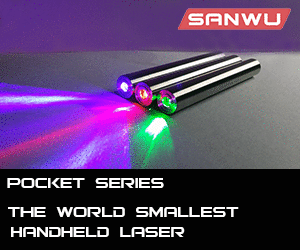The lowest divergence I've heard of in a pointer which has over 500 mw of output without a beam expander, or large diameter collimation lens is the RPL series made by Optotronics which produces .9 to 1.0 mRad. However, there are some single mode laser pointers which probably have that or better, but since they are such low power I don't have much interest in them as a single diode unit.
Your .8 mRad pointer is producing outstanding divergence, even DPSS lasers don't normally have less than 1.0 mRad full angle divergence, and that's for the expensive high quality ones. For any given laser the divergence of the collimated output depends upon the beam diameter. Low divergence while at the same time having a small beam diameter is the cats meow because the beam stands out so brightly due to a higher power density in a small area. A 1.0 mRad full angle divergence laser pointer which produces a beam which is only 1 or 2 mm wide a few inches past the output (at infinity focus) is a great pointer, if you can find one. You won't find that unless it is DPSS, or perhaps a low power single mode laser diode. OK, for the hair splitters, masking the output of a high power multimode laser diode which has had its beam expanded can produce a low divergence small diameter beam output too, I've considered doing that myself, but it just seems like an awful waste of power for what I like to use my pointers for. I'm no expert, still learning a lot every year so if someone can share another way to get a tiny diameter beam at 1 watt or higher that doesn't use a DPSS or single mode diode I'd love to hear from you.
Any multimode laser diode can have low divergence, you just need to expand the beam enough which means using a larger diameter collimation lens with a longer focal length to allow the beam to naturally expand into wider beam prior to collimation, or, just stick a two lens beam expander in the front of your already collimated laser pointer output and that will reduce the divergence, but at a cost, the added loss of using more lenses.
Here's a cut and paste snip I found online comparing 1.2 to 1.5 mRad and showing how much more power is delivered at a distance with only that amount of difference:
https://www.optotronics.com/laser-divergence.php





